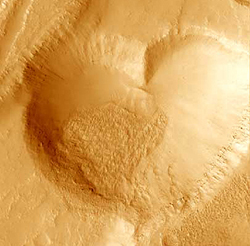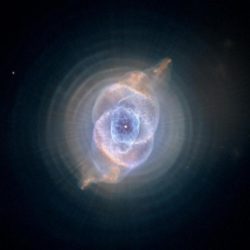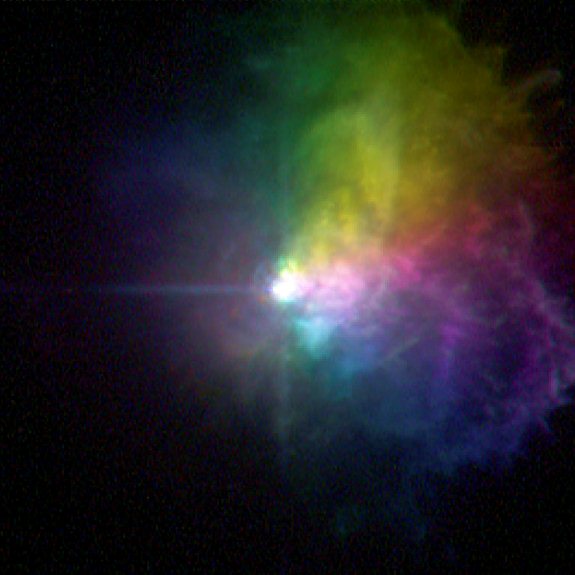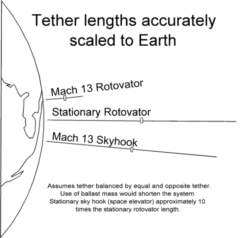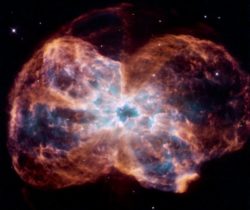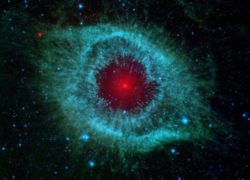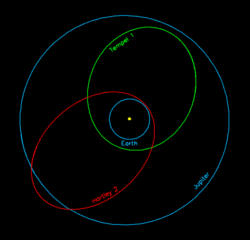Cosmic Hearts
I hope you all had a happy Valentine's Day! :) Here are some pictures of cosmic hearts: A heart-shaped crater on Mars captured by the Mars Orbiter Camera onboard the Mars Global Surveyor. A heart-shaped Nebula, called W5, located 6000 light years away in the constellation of Cassiopeia.
Astronomy Picture of the Week – The Cat’s Eye Nebula
This detailed view of the so-called Cat’s Eye Nebula was taken by NASA’s Hubble Space Telescope. The nebula, formally cataloged as NGC 6543, was one of the first planetary nebulae to be discovered and is one of the most complex. Observations suggest the star ejected its mass in a series of pulses at 1,500-year intervals. This created dust shells, each of which contain as much mass as all of the planets in our solar system combined. These concentric shells make a layered, onion-skin structure around the dying star. Image Credit: NASA, ESA, HEIC, and The Hubble Heritage Team (STScI/AURA)
Astronomy Picture of the Week – Polarized Star Light
This picture taken by the Hubble Space Telescope shows the polarized light of the massive star VY Canis Majoris. Image Credit: NASA, ESA, and R. Humphreys (University of Minnesota)
Astronomy Picture of the Week – Interacting Spiral Galaxies NGC 2207 and IC 2163
This near-collision has been caught in a photo by NASA's Hubble Space Telescope. Two spiral galaxies pass by each other like majestic ships in the night. They are located in the direction of the constellation Canis Major.
Non-Rocket Spacelaunch – Tether propulsion safety issues
The use of tethers in space poses many challenges and safety issues. This third part to the tether propulsion article will focus on those issues. A lot of the challenges and safety issues of a space tether system are similar to those of a space elevator described in a previous article, but some are unique to the space tether concept.
Astronomy Picture of the Week – The Colorful Demise of a Sun-Like Star
This image, taken by the Hubble Space Telescope, shows the colorful demise of a Sun-like star. The star is ending its life by casting off its outer layers of gas, which formed a cocoon around the star’s remaining core. Ultraviolet light from the dying star makes the material glow. The burned-out star, called a white dwarf, is the white dot in the center. It is one of the hottest known white dwarfs, with a surface temperature of nearly 200,000 degrees Celsius. The nebula is called NGC 2440 and lies about 4,000 light-years from Earth in the direction of the constellation Puppis. Image credit: NASA, ESA, and K. Noll (STScI)
Non-Rocket Spacelaunch – Tether satellite missions
This is the second part to the article about tether propulsion. It will focus on space missions that tested tethers in space. The first such mission took place in 1966. Gemini 11 deployed a 30m tether connecting it to the Agena target vehicle. It created a small amount of artificial gravity (0.00015 g) by spinning the two spacecraft.
Astronomy Picture of the Week – NGC 1999 Nebula
This photo of nebula NGC 1999 was taken by the Hubble Space Telescope in December 1999. It is a good example of a reflection nebula. Just like fog around a street lamp, a reflection nebula shines only because a light source illuminates its dust and the nebula does not emit any visible light of its own. The main light source of this nebula is a recently formed star, visible in this photo near the center. This young star is cataloged as V380 Orionis, and its white color is due to its high surface temperature of about 10,000 degrees Celsius (nearly twice that of our own Sun). Its mass is estimated…
Non-Rocket Spacelaunch – Tether propulsion
Tether propulsion consists in using long, very strong cables (known as tethers) to change the velocity of spacecraft and payloads. The tethers may be used to initiate launch, complete launch, or alter the orbit of a spacecraft. This form of propulsion would be significantly less expensive than spaceflight using modern rocket engines.
Astronomy Picture of the Week – Helix Nebula
This eerie picture captured by the Spitzer Space Telescope shows the Helix Nebula, also known as NGC 7293. It is located 700 light-years away in the constellation of Aquarius. The two light-year diameter shroud of dust and gas around a central white dwarf is the result of the final stages in the evolution of a sun-like star. Dust particles are what makes this cosmic eye look red. Image Credit & Copyright: NASA, JPL-Caltech, Kate Su (Steward Obs., U. Arizona), et al.
Hartley 2 Comet
Comet Hartley 2 has made it to the news recently: first because of the comet's flyby near Earth and then due to it being visited by the Deep Impact spacecraft.
Astronomy Picture of the Week – Solar Eruption
This is a fairly old picture of the Sun since it has been taken on September 14, 1997 by the space-based SOHO observatory. It represents a massive solar eruption. Such a phenomenon occurs when magnetic fields arching from the solar surface twist and trap ionized gas, suspending it in huge looping structures, often expelling it into space. Occasionally that huge amount of solar plasma is ejected in the direction of Earth.

